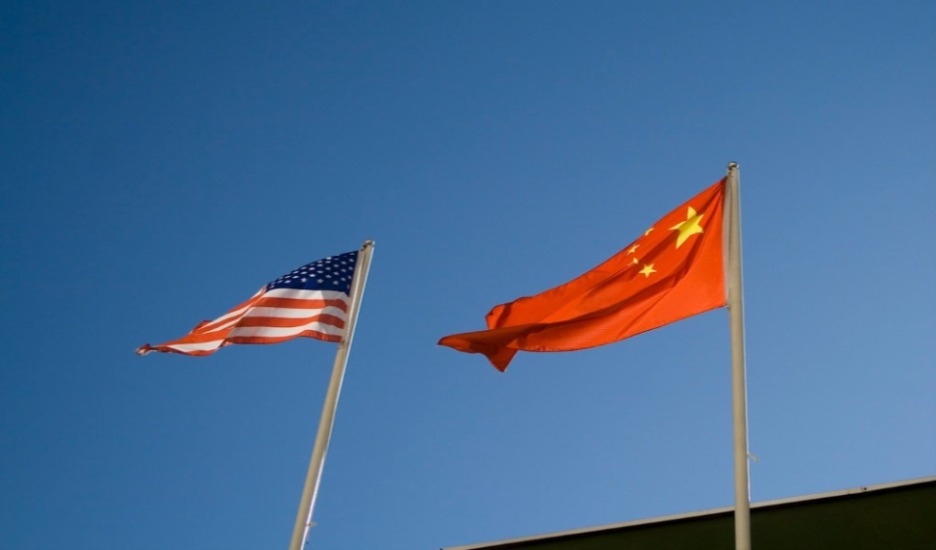Water Wars: Status Quo Keeps Tensions High
Chinese Vessel Ducks for Cover in Vietnamese Territorial Waters

Published by The Lawfare Institute
in Cooperation With

Chinese Vessel Ducks for Cover in Vietnamese Territorial Waters

Vietnam’s Coast Guard seized a Chinese oil tanker disguised as a fishing vessel operating illegally in the Gulf of Tonkin. The ship was carrying 26,000 gallons of oil and operated by a crew of three Chinese sailors. State media reported that the oil was being used to refuel Chinese fishing vessels also operating illegally in the area. The tanker’s captain did not disclose where the oil came from. All three crewmembers are in police custody. News reports also noted that, though it is common for Hanoi to deal with errant Chinese fishermen in its waters, it rarely seizes a boat and its crew. The Thanh Nien, a Vietnamese newspaper, noted that the Coast Guard has chased 110 Chinese fishing vessels out of its waters over the last two weeks.
In the days after the scuffle, Foreign Ministry Spokesperson Lu Kang denied that China uses its fishing fleet to advance territorial claims in disputed waters and called for increased bilateral cooperation on fisheries management. On Thursday, however, Vietnamese Foreign Ministry Spokesperson Le Hai Binh hit back on a wider range of Chinese actions in Vietnamese-claimed waters. He called on the PRC to remove an oil rig from the Gulf of Tonkin and criticized a newly operationalized lighthouse on Subi Reef (see below for more).
In other news...
United States
Many words on the sidelines of last week’s Nuclear Security Summit led to little change in Sino-American dialogue on maritime conflicts. Though Foreign Minister Wang Yi said that, “the Americans have said they will not take sides, so it should not be a problem for the China-US relationship,” President Xi reiterated that the South China Sea was a “core” Chinese interest. Underscoring this lingering divide, President Obama met separately with President Park and Prime Minister Abe, where they reportedly “shared a common awareness of issues on many points” regarding Chinese advancement in the South China Sea. Later in the week, Secretary of Defense Ash Carter asserted that, “by far and away over the past year China has been the most aggressive” player in the Asia-Pacific. Others in the Department of Defense may be less forthcoming; the Navy Times reports that the White House has ordered senior military brass to tamp down rhetoric on China’s activities in the South China Sea.
A day after the Nuclear Security Summit ended, Reuters reported that a third freedom of navigation operation (FONOP) is scheduled for early April. Some experts predict that the U.S. might choose to sail past Mischief Reef, which is now home to a military-length Chinese airfield. PRC Foreign Ministry Spokesperson Hong Lei responded that China “resolutely opposes any country using so-called ‘freedom of navigation’ as an excuse to damage China’s sovereignty, security and maritime rights.”
China
It was the switch-flip heard ‘round the world: On Wednesday China operationalized a 180-foot lighthouse on Subi Reef. Before land reclamation last year, Subi Reef was submerged at high tide. In an article heralding the new light, Xinhua claimed that it would “provide efficient navigation services” and Spokesperson Lu Kang said that it would ensure safety and freedom of navigation. The USS Lassen sailed within 12 nautical miles of Sub Reef in October as part of Washington’s first regularly scheduled FONOPS.
Following on last week’s fisheries spat with Malaysia, Spokesperson Hong Lei announced bilateral talks as part of “a tradition for China and Malaysia to utilize bilateral channels to manage our differences.” Reacting to Japan’s new radar station on Yonaguni Island, Ministry of Defense Spokesperson Yang Yujun criticized Tokyo for “making a scene” about freedom of navigation, claiming that, “Japan always criticizes others, so how can it explain its own actions?”
Philippines
8,500 American and Filipino troops are taking part in the Balikatan, an eleven-day joint military exercise. For the first time they are joined by 80 Australian troops and eight Japanese self-defense officers. The Japanese are taking part as observers. Lieutenant General John Toolan, head of U.S. forces for the exercise, announced that U.S. Secretary of Defense Ash Carter would also be observing the Balikatan, the first American Defense Secretary to do so, as part of a longer trip to the region. Secretary Carter is scheduled to “spend time out at sea,” during his visit. An editorial from Xinhua reacted to the news by cautioning that, “a provocation so fear-mongering and untimely . . . is likely to boomerang on the initiators.” PRC Foreign Ministry Spokesperson Hong Lei also said that mil-mil cooperation should “promote regional peace, stability and development, instead of the contrary.”
The day before joint exercises began, a Japanese submarine arrived in Subic Bay for the first time in fifteen years. The submarine was escorted by two Japanese destroyers and stayed in the Philippines for three days before it was scheduled to cross the South China Sea for a port call in Vietnam.
Japan
Simmering Sino-Japanese tensions persisted as President Xi Jinping and Prime Minister Abe chose not to speak to each other during last week’s nuclear summit despite standing only a row apart. Though Foreign Ministry Spokesperson Yasuhisa Kawamura claimed that, “overall relations between Japan and China are going in the direction of gradual improvement,” on Monday the Japanese Coast Guard deployed twelve additional ships to patrol waters around the Senkaku/Diaoyu Islands. After ten days of near constant patrols by the Chinese Coast Guard, Tokyo reported that three Chinese Coast Guard vessels crossed into territorial waters surrounding these islands for the ninth time this year.
Making good on reports two weeks ago, Japan started coordinating with G-7 nations to include South and East China Seas concerns in a communiqué at the end of the group’s May summit. G-7 Foreign Ministers, meeting this Sunday, will also issue a statement calling on all nations (read, China) engaged in territorial disputes to abide by court rulings. Tokyo continued this type of outreach in a meeting between Prime Ministers Abe and Modi on the sidelines of the Nuclear Security Summit, where they shared common concerns regarding China’s actions in the South and East China Seas.
Indonesia
Blowback from China’s incursion near the Natuna Islands persisted this week as Jakarta announced plans to double the number of troops stationed in the region and earmarked $34 million to expand air and naval facilities. Defense Minister Ryamizard Ryacudu also announced that five F-16 jets would be deployed to the Natuna Islands, saying that “Natuna is a door, if the door is not guarded then thieves will come inside.” The Air Force also plans to deploy Special Forces equipped with a modular air defense system called Skyshield, which includes 35 mm automatic multirole cannons that can shoot at aircraft and precision-guided munitions.
Jakarta was also busy disposing of impounded foreign fishing vessels with usual flair. On Tuesday it blew up 23 foreign vessels (13 from Vietnam and 10 from Malaysia) “to protect the sovereignty of our territory,” said Maritime Affairs and Fisheries Minister Susi Pujdiastuti. Indonesian intermediary courts also ruled that 10 Chinese fishing boats, impounded in December 2014, were operating illegally in Indonesian waters. Owners are appealing the case to Indonesia’s Supreme Court. Earlier, Minister Pujdiastuti reiterated Jakarta’s demand that China hand over the fishing vessels that entered Indonesian waters two weeks ago, saying that, “as a big country you cannot bully small countries.”
Taiwan
Defense Minister Kao Kuang-chi fielded questions on the South China Sea during a wide-ranging discussion in Taiwan’s legislative session last week. He was nonplussed by Tokyo’s move to establish a radar station on Yonaguni island, saying that it was targeted at the PRC despite its proximity to Taiwan. Earlier, another Taiwanese official noted that Tokyo has “every right” to establish a radar station on Japanese territory. Minister Kao also reassured legislators that, despite recent military buildup in the South China Sea, Taiwan’s armed forces are able to defend its outposts. Relatedly, National Security Bureau Deputy Director Chou Wu-mei noted that “China does not have the military capability in the region to declare an ADIZ, therefore we believe it is unlikely China would do so in the near future.”
Vietnam
Vietnam selected a new President, Tran Dai Quang, and Prime Minister, Nguyen Xuan Phuc. State media quoted lawmakers and military officials who greeted the new President with renewed calls to defend the country’s territorial integrity. One lawmaker said it will “be more challenging and complicated” for the new President to safeguard Vietnamese sovereignty. The Prime Minister also pledged to “firmly defend the country’s independence, sovereignty, and territorial integrity.”
Singapore
Prime Minister Lee shared his take on U.S. policy in the South China Sea during an extensive interview with the Wall Street Journal Editorial Board. He called for more robust American involvement in the Pacific, recommending that Congress approve the Tran-Pacific Partnership and ratify UNCLOS. PM Lee also said that Washington should be clearer about the intent behind FONOPS, intimating that there have been conflicting narratives coming out of the Department of Defense and National Security Council. Overall, he cautioned against reciprocal responses to Chinese military buildup in the region.
Analysis, Commentary, and Additional Information
The Straits Times has three great investigative pieces on the ways in which fish and fishermen are fueling regional disputes. In the first, Leslie Lopez examines how depleted fish stocks are forcing captains to sail further afield. In the second and third, Teo Cheng Wee profiles Chinese fishermen at the forefront of asserting the PRC’s regional claims and the village that many of them come from. Tom Hanson at The National Interest continues this analysis by examining how Chinese fishermen have been used as a strategic force multiplier.
Another trio of pieces examines the implications of rising military spending. Steven Stashwick at The Diplomat cautions that, notwithstanding recent hullabaloo, HQ-9 deployment on Woody Island doesn’t signal that China is looking to militarize the Spratlys anytime soon. Franz-Stefan Gady, also at The Diplomat, shows how China is fueling increased military spending in Asia. The Financial Times builds on Gady’s analysis by outlining how international arms manufacturers are profiting from this increased spending.
Indonesia has been on the minds of many analysts over the past couple of weeks. At The Interpreter, Evan Laksmana tries to make sense of the county’s Natuna Island response through the lens of domestic politics. Editors at the East Asia Forum look to the future and assess the relative strategic opportunities for Indonesia and China in their maritime disputes.
A number of other great pieces circulated this week on a range of other topics. Gregory Poling and Zack Cooper at AMTI outline a widely shared plan for countering Chinese reclamation in Scarborough Shoal. Richard Javad Heydarian dives into the Philippines’ presidential elections and projects its impact on bilateral relations with China. Bonnie Glaser at The Interpreter explains why little will change after President Obama met with President Xi and Helene Cooper reflects on her experience sailing on a U.S. Navy Cruiser during an encounter with a Chinese frigate for NPR.
More Articles
-

How to Tell a National Security Story
A review of two books from Peter Roady and Andrew Preston. -

Students, Spies, and Self-Inflicted Wounds
The short-sightedness of limiting foreign students in the name of national security. -

Lawfare Daily: The Duty to Disobey Unlawful Orders
What is the duty to disobey unlawful orders?


.jpg?sfvrsn=5a43131e_9)


